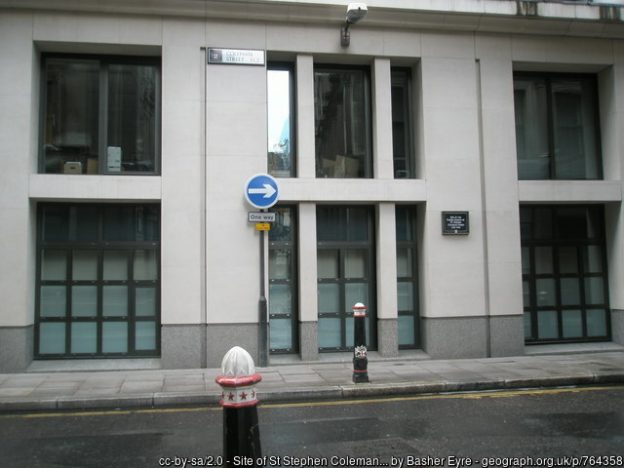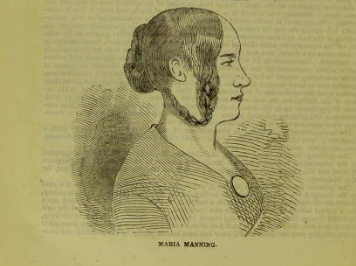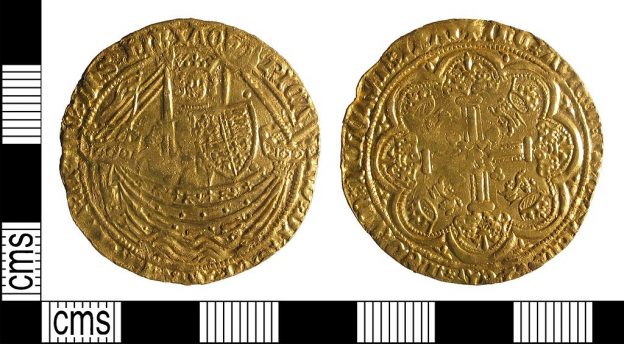Lucy Worsley’s latest radio show/podcast gets into a bit of legal history, mostly crime, but also some other bits. Obviously, I felt duty-bound to listen to it all, and did not in any way just want to hear about a few scandalous Victorian murder cases.
So – what was the verdict? I thought it was a good thing. I do think LW is a good thing in general,[i] and her shows are generally well put-together. Of course they are aimed at an audience other than full-time academic historians, but it is hugely important to produce things for everyone with an interest in history, and I suspect that it makes sense to get some things across via a bit of a romping TV or radio show by somebody with a bit of charisma, rather than trying to turn every academic into a great communicator in that register, as the various ‘impact’ and ‘knowledge exchange’ imperatives tyrannising British academia insist is essential. Also top marks for using a host of women as experts. There is quite an imbalance to be redressed in media history, so these things are important.
The series is organised around eight sensational cases of homicide by women, or possible homicide, though it branches out in two other important directions. First, it makes past-present links, with its avowedly feminist slant, and by bringing in comparisons with modern law and criminal investigation. Secondly, it uses each case as a point of departure, for consideration of the lives of nineteenth century women, including the legal changes which were beginning to dismantle some of the more egregious disadvantages they might face in terms of property and rights of citizenship.
Episodes
1: Florence Bravo
I will confess straight away that, despite this being a bit of a sensation in its day, I had never heard of ‘the Balham mystery’ or Florence Bravo and the death by poisoning of her charmless-sounding lawyer husband, Charles, in 1876. Apart from the crime stuff – back to that in a moment – there is also (hurrah!) a little bit on property. It seems Florence had some money from a previous marriage, when she married Charmless Charles, but he could not get his paws on it, as she had used a trust (only me who would have liked more details on this? OK, fair enough …) … and a very brief not to the Married Women’s Property legislation (again … only me … OK …)
On the inquest, which sounds as if it got further into examination of Florence’s former sexploits with an old doctor than was strictly necessary, and which was reported in a fairly unrestricted way in the press, it was interesting to have the view of a modern barrister, Sasha Wass QC, pointing out some of the differences in terms of sexual history evidence and contempt rules (though also some depressing similarities across time …). I was also rather taken by the fact that there was a bit of a thing for sending the police interfering busybody letters suggesting lines of investigation they might take. Can’t imagine that they appreciated that!
(FYI, the inquest did not point to Florence as the killer, despite the impeccable logical link between shagging an older doctor and poisoning a husband’s wine … but she ended up living in hiding and died shortly afterwards, drinking herself to death on (unpoisoned) wine).
2: Madeleine Smith
I was familiar with this one: the Glasgow cocoa killer (allegedly poisoned her unsuitable ex in 1857, with arsenic, but the jury bring it in as ‘not proven’). The nice historical/legal historical point here was a bit of comparison between the story which was made to emerge from a selection of Smith’s letters, in the hands of the prosecution and that which came out after careful perusal of all 250 surviving letters. It is, perhaps, a little odd hearing somebody looking at documents on the radio, but that point was well made.
- Lizzie Borden
Off to Massachusetts for this famous axe/whacks murder case from 1892-3. Maybe a little less ‘core legal history’ here, and more ‘did she do it?’, but a couple of interesting points on the particular female interest in ‘true crime’ – the case in 1893 and now – and on gender and class.
- Grace Marks
Canada is the next location, for this ‘servant (allegedly) kills master’ story. Also quite well known, through Margaret Atwood’s novel treatment. Gory double killing. Considerable doubt about Grace’s role, and the main interest from my point of view was pondering on the way in which it was, and is, insisted upon that women defendants react in a particular emotional manner.
- Getting Away With It
This one looked back at and thought about no.s 1-4, taking things in a slightly more ‘academic history’ direction, with greater input from Dr Rosalind Crone. Had me at ‘It’s more complicated than that, isn’t it?’ (here, in relation to the Victorian ‘angel in the house ideal).
- Amelia Dyer
In this one, we get into the murky world of baby farming, and the investigation, prosecution and conviction of industrial-level baby farmer and killer, Amelia Dyer. She was a native of Bristol, I learned – strangely not somebody we hear a great deal about here. This one sees LW stepping back a little and letting the programme be led by the excellent combination of R. Crone and a former leading police detective, Jackie Malton, who had some great insights on the investigation process). The added social/legal history material here highlighted the changed position of unwed mothers, given full responsibility for their children under the New Poor Law 1834, and thus left to try and find some way of maintaining them, and working themselves – enter the baby farmers (unregulated and clearly not always kind, or, indeed, un-murderous). Also liked the little ending in which LW warns against too much self-satisfied contempt for the past, given the continuing mess of provision for child care for those in need. Well played.
- Mary Ann Cotton
This is another one which is familiar to me, for slightly weird reasons – my mother’s family tree includes a ‘Mary Anne Cotton’, from near enough to the scene of the alleged crimes, and the family have always been VERY insistent that there is absolutely no connection with this woman, pointing out the different spelling of Ann/Anne! A common enough name, I suppose, but anyway, she has always been on my radar for that reason, and the little song ‘Sing, sing, what shall I sing?/ Mary Ann Cotton tied up on a string …’ (not mentioned here). So the suggestion that this is not such a well-known case was a little bit surprising. Anyway, much discussion of poisoning, including the teapot alleged to have been used (news to me that tea was good for poisoning purposes because hot things are best and cold ones problematic for dissolving arsenic … the things you learn …) and discussion with barrister Alexandra Wilson about past-present comparisons concerning the trial. Important to note the differences caused by changes in rules about character evidence since the 1870s and this case. Might have gone into the fact that the jury was all male, with a property qualification, rather than being representative of society as a whole (which probably increases the potential impact of playing up gender roles). My mother may be annoyed at the absence of an official acknowledgement that M.A.C. was ABSOLUTELY NOT related to us …
- Esther Lack
This one was unfamiliar to me. Esther Lack’s alleged crimes were the killings of three of her children. There was no ‘did she do it?’ here – the focus now, as then, was on her mental state, and the way in which mental disturbance was treated. Found not guilty by reason of insanity in 1865, Lack was sent off to what sounds like a rather pleasant asylum in Wiltshire (though died shortly afterwards). We hear from Psychiatrist/psychotherapist, Dr Gwen Adshead on infanticide and mental disorders relating to maternity, and from Dr Rosalind Crone on asylums and the squalid conditions of Lack’s life in London. And she is invited to offer the academic-heart-warming line ‘It’s way more complicated than that!’. Hurrah! Because life is and was more complicated than any neat summary or story-arc. Viewers and listeners can cope with something other than ‘I have all the answers and will impose my narrative upon the past’. So thumbs up there.
- Hannah Mary Tabbs
I had not heard of this one either. It’s a US case, so maybe that’s less surprising. Well worth including though, for the additional insights it brings, with regard to the impacts of race on the 19th C criminal justice system, and the links drawn between that and the present, with regard to racism and policing, and incarceration.
- Mad, Bad and Dangerous to Know
This was a bit of a round-up and discussion of general themes, especially from the second half – those who presumably ‘dunnit’. In a move calculated to annoy a certain demographic, the emphasis is on the environment which produced the situations in which the killings took place – with particular attention being paid to economic issues and the lack of support for women and maternity. There was a good bit on the press and the development of sensational headlines. I would have liked to hear a bit more about the property/trusts aspect of, and arising from Bravo – conversation could have done with a bit of a steer on that. Perhaps a separate series on those issues would be an idea? Come on, you know it makes sense!
GS
22/5/2022
[i] (did an actual doctorate, note, and worked her way up as a historian, rather than taking the ‘following Daddy’s footsteps and making programmes with Daddy’ route of some self-styled ‘history guys’ one might mention … OK, got that off my chest)
Image: a tombstone. Seemed sort of appropriate. Photo by Mr Xerty on Unsplash
Update, 2/3/2024
This show has now extended to 30 episodes, and I have listened to them all. It has, I think, changed a little in nature, and for the better. It was never less than careful in its presentation of the lives and crimes of the women, and the deceased, in these grim tales, but it has, in the last episodes in particular, made some particularly interesting choices of subject (including especially racism and LGBT lives) and has brought to the fore some useful thinking about how to write the history of women, and when and how we should make links with present struggles. There is a lot to be said for this sort of endeavour, bringing together engaging stories and then just pushing an audience to think about how they are thinking about them. Worthwhile.









